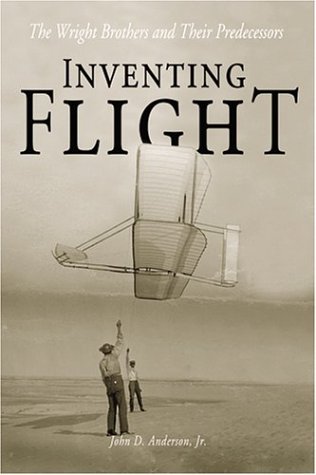The invention of flight craft heavier than air counts among humankind's defining achievements. In this book, aviation engineer and historian John D. Anderson, Jr., offers a concise and engaging account of the technical developments that anticipated the Wright brothers' successful first flight on December 17, 1903. While the accomplishments of the Wrights have become legendary, we do well to remember that they inherited a body of aerodynamics knowledge and flying machine technology. How much did they draw upon this legacy? Did it prove useful or lead to dead ends? Beginning with the earliest attempts at flight, Anderson explains how Leonardo daVinci first began to grasp the concepts of lift and drag which would be essential to the invention of powered flight. He describes the many failed efforts of the so-called "tower jumpers," from Benedictine monk Oliver of Malmesbury in 1022 to the eighteenth-century Marquis de Bacqueville.
He tells the fascinating story of aviation pioneers such as Sir George Cayley, who in a stroke of genius first proposed the modern design of a fixed-wing craft with a fuselage and horizontal and vertical tail surfaces in 1799, and William Samuel Henson, a lace-making engineer whose ambitious "aerial steam carriage" was patented in 1842 but never built. Anderson describes the groundbreaking nineteenth-century laboratory experiments in fluid dynamics, the building of the world's first wind tunnel in 1870, and the key contributions of various scientists and inventors in such areas as propulsion (propellers, not flapping wings) and wing design (curved, not flat). He also explains the crucial contributions to the science of aerodynamics by the German engineer Otto Lilienthal, later praised by the Wrights as their "most important" predecessor. In telling the dramatic story of the Wright brothers' many experiments at Kitty Hawk as they raced to become the first in flight, Anderson shows how the brothers succeeded where others failed by taking the best of early technology and building upon it using a carefully planned, step-by-step experimental approach.
(They recognized, for example, that it was necessary to become a skilled glider pilot before attempting powered flight.) With vintage photographs and informative diagrams to enhance the text, Inventing Flight will interest anyone who has ever wondered what lies behind the miracle of flight. "I have long thought that need exists for a book, suitable for undergraduates, that would tell the connected prehistory of the airplane from Cayley to the Wrights. In light of the recognized excellence of his technical textbooks (with their stimulating historical vignettes), I can't think of a better person than Professor Anderson for the job. He has the rare combination of technical and historical knowledge that is essential for the necessary balance. Inventing Flight will be a welcome addition to undergraduate classrooms."--Walter G. Vincenti, Stanford University
- ISBN10 0801868742
- ISBN13 9780801868740
- Publish Date 13 April 2004
- Publish Status Out of Stock
- Out of Print 17 January 2007
- Publish Country US
- Imprint Johns Hopkins University Press
- Format Hardcover
- Pages 176
- Language English
